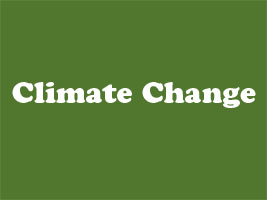A piece of writing to commemorate World Food Day 2012 on 16th October
Climate change is about the poorest, most vulnerable and food insecure people. Most of the food-insecure communities in heavily populated developing countries suffer from extreme weather events and environmental degradation. Hence, in the shorter term, hunger emergencies are likely to increase. In the longer run, poor people’s ability to seize opportunities that could help them out of hunger and poverty is being undermined due to critical climatic factors.
According to World Food Programme, climate change is a great challenge whose impact and implications will be global, far-reaching and largely irreversible. Climate change is already increasing the risk of exposure to hunger, malnutrition and food insecurity among the poorest and most vulnerable people. Natural disasters are becoming more frequent and intense, land and water are becoming more scarce and difficult to access, and increases in agricultural productivity are becoming more difficult to achieve.
What is food security? The World Food Summit (1996) defines it as, “food security exists when all people, at all times, have physical and economic access to sufficient, safe and nutritious food to meet their dietary needs, and their food preferences are met for an active and healthy life.”
Ms. Katherine Harmon in her recent article on “How to Fight Food Insecurity in a Changing Climate” states that about 800 million people worldwide do not get enough food to eat, while about 1.5 billion are overweight. As the global population expands by an additional 2 billion people by 2050 and climate change alters traditional agricultural areas, scientists and policy makers are racing to figure out how to address both problems, she adds.
The climate is no longer reliable and the demands for food are growing so fast that a breakdown in food security is inevitable, unless urgent action is taken at the local, national and global level. According to United Nation’s recent press release, the world’s leading environmentalists issued a warning that the global food supply system could collapse at any point, leaving hundreds of millions more people hungry, sparking widespread riots and bringing down governments. UN press release refers that countries have run down reserves from an average of 107 days of consumption 10 years ago to under 74 days recently with food consumption exceeding the amount grown for six of the past 11 years.
On the whole, climate change impact has come with a new era of rising food prices and spreading hunger. Food insecurity and climate change are already inhibiting human wellbeing and economic growth throughout the world, and these problems are poised to accelerate. Climate change is likely to impact global food supplies and prices.
The overall availability of food is affected by changes in agricultural yields as well as by changes in arable land. Changes in food production, due to drought or heavy rain fall, are likely to impact food prices and will affect the ability of poor households to access food. Decreased water availability and quality in some areas are likely to result in increased health and sanitation problems, such as diarrhoeal disease. This, together with changes in the patterns of vector-borne disease, has the potential to increase malnutrition by negatively affecting food utilisation.
Recommendations
Climate change is a global phenomenon and the industrialised countries are to be blamed for large quantities of greenhouse gas (CFC) emissions. Locally, nevertheless, we have to take care of environment, climate change adaptations and disaster risk management. Food security is necessary to build people’s resilience to climate change impacts and adaptations.
Food security is primarily a manmade dilemma and a distribution problem. Instead of new state policies on food security, a better and decentralised food distribution system would be an effective way to address local food security issues. Besides, there is urgent need to substitute cash crops such as sugarcane, cotton and tobacco with food crops. Localisation of food production is also important to avoid food from rotting in storerooms even as people die of starvation in our country.
Many other developments in a while made food security situation worse; for instance (1) modern agriculture technologies that enhanced use of water thirsty high yielding crop varieties and indiscriminate use of chemical pesticides/fertilizers; (2) monopoly of transnational companies over seeds; (3) widespread land grab by vicious investor countries, groups and transnational companies in poor countries; and (4) deteriorating state intervention in food research, production and distribution despite the fact that provision of food security is an lawful obligation for the government.
Furthermore, given women’s crucial role in food production and provision, any set of strategies for sustainable food security must address their limited access to productive resources including access to land, assets and financial resources.
According to research reports, helping smaller farms to persist is also key to ensuring good food and local economic stability far into the future. Otherwise communities will remain vulnerable to a downward spiral of lost productivity, poverty and food insecurity.
In the meantime, we also have to opt for sustainable eating – both environment – and health-wise. If we don’t encourage eating choices that are good for people and the planet, we must resign ourselves to a growing diet-related disease burden. Some 1.3 billion tons, about a third of all food, is lost to waste each year. The global demand for food will increase with population growth, but the amount of food per person that needs to be produced can be brought down by eliminating waste in supply chains, ensuring more equitable access to food and moving to more resource-efficient (and healthier) vegetable-rich diets. Thus, people should be eating more healthfully and reducing waste.
Author: Tahir Hasnain is a veteran researcher, writer and development practitioner serving the non-government development sector since two decades. Currently he works with Shirkat Gah as Programme Manager, Environment & Livelihood. He can be contacted at – tahir@khi.sgah.org.pk



